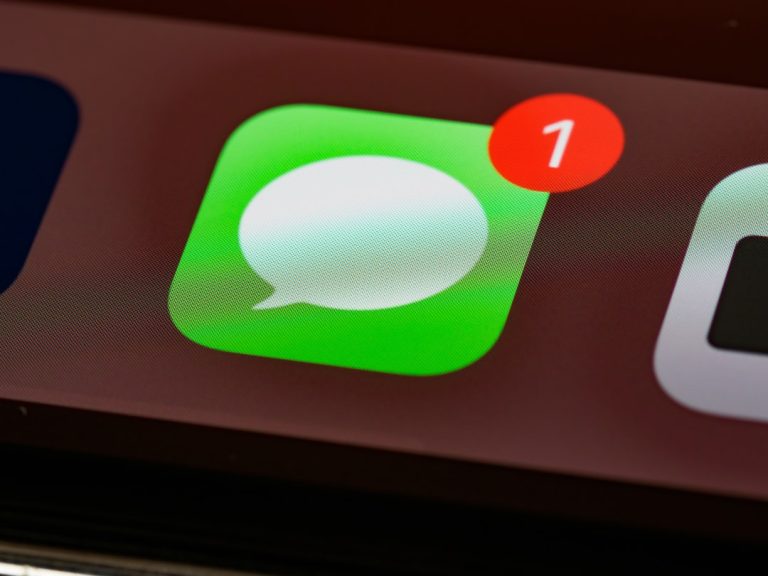How I Set Up My Notifications to Support Deep Work, Not Hinder It.
In our hyper-connected world, the constant ping, buzz, and flash of notifications have become the background noise of our lives. While they promise to keep us informed and connected, I found them increasingly sabotaging my ability to concentrate on meaningful work. For years, I struggled with the siren call of every new email, social media update, or news alert, feeling my focus shatter into a thousand pieces with each interruption. This wasn’t just annoying; it was actively preventing me from engaging in what author Cal Newport calls “Deep Work” – the ability to focus without distraction on a cognitively demanding task. I knew something had to change, and it started with a complete overhaul of how I managed my notifications. This isn’t a theoretical guide; it’s a deep dive into my personal journey and the precise system I built to reclaim my focus.
My goal was simple yet profound: to transform notifications from relentless distractors into silent allies, serving me only when truly necessary, and never at the expense of my deepest concentration. This shift wasn’t about eliminating notifications entirely – that’s often impractical – but about creating a deliberate, thoughtful system that supports uninterrupted stretches of deep work. It required a mindset shift, a rigorous audit, and a granular approach to device settings. If you’ve ever felt held hostage by your devices, constantly pulled away from what truly matters, then my experience might just offer the blueprint you need. It’s about more than just turning off sounds; it’s about digital well-being practices that prioritize your cognitive resources.
The Silent Saboteur: Recognizing Notifications as Deep Work’s Arch-Nemesis
For too long, I viewed notifications as benign, even helpful. They were just “quick checks,” momentary glances that surely couldn’t derail hours of effort. Oh, how wrong I was. The insidious nature of notifications isn’t just the time spent responding; it’s the cognitive residue they leave behind. Each alert pulls your attention away, forcing your brain to context-switch. Even if you don’t act on it immediately, that little “ding” triggers a mental query: “What was that? Is it important?” This mental overhead chips away at your ability to dive deep, making it harder to solve complex problems or produce high-quality work. I experienced this firsthand: what I thought was an hour of focused work often turned out to be only 20 minutes of actual deep concentration, interspersed with notification-induced mini-breaks that broke my flow.
My Personal Wake-Up Call to the Notification Overload
The turning point for me arrived during a particularly challenging project. I was staring at a complex problem, needing to synthesize disparate ideas into a coherent strategy. Every time I felt myself nearing a breakthrough, my phone would buzz, or a desktop pop-up would appear. I’d glance, get momentarily sidetracked, and then struggle to regain my train of thought. It was like trying to fill a bucket with a hole in the bottom. I realized then that my devices, designed to enhance productivity, had become my biggest productivity bottleneck. This wasn’t just about willpower; it was about environment design. I needed to engineer an environment where deep work was not just possible, but the default state. This meant confronting my notification habits head-on and acknowledging their role as the silent saboteurs of my potential. Research consistently points to the detrimental effects of digital interruptions; a study highlighted by the American Psychological Association, for instance, confirms how even brief digital distractions can significantly impair attention and performance. This realization was a crucial step towards achieving a true flow state.
The Cognitive Toll: Understanding Attention Residue and Context Switching
Beyond the immediate distraction, the concept of “attention residue” became a pivotal understanding for me. When you switch from one task to another, especially after an interruption, your attention doesn’t immediately snap back to full capacity on the new task. A portion of your focus remains “residue” on the previous task or the source of the interruption. This means that even if you quickly dismiss a notification, your brain is still processing it, reducing your cognitive bandwidth for the task at hand. Studies suggest it can take 15-25 minutes to fully regain deep focus after a significant interruption. Multiply that by dozens of pings a day, and you quickly see how entire hours of potential deep work can evaporate, replaced by fragmented attention and superficial engagement. Recognizing this profound cost solidified my resolve: a “quick check” was never truly quick, and it always came at a steep price to my productivity and mental clarity.
My Grand Notification Audit: Deciding What Truly Deserves My Attention
The first, and arguably most critical, step in my journey was a comprehensive audit of every single notification I received across all my devices. This wasn’t a quick skim; it was a forensic examination. I dedicated an entire afternoon to this, treating it like a serious business project. My goal was to identify every app, every service, and every person vying for my attention. I listed them all out: email clients, messaging apps, social media, news alerts, calendar reminders, system updates, smart home devices – everything. This detailed inventory was eye-opening. I hadn’t realized the sheer volume of digital noise I was constantly exposed to. It felt like uncovering a hidden layer of digital clutter that had been silently accumulating, much like physical clutter in an unkempt workspace. This audit became the foundation for optimizing my workspace for focus, both digital and physical.

Categorizing the Digital Noise: Urgent, Important, or Just Distracting?
Once I had my exhaustive list, I began the ruthless process of categorization. I created three simple buckets:
- Urgent & Essential: Notifications that genuinely require immediate attention and directly impact my work or personal safety. Think critical client messages (from specific, pre-approved contacts), emergency family calls, or security alerts for my home or finances. These are rare and should be treated as such.
- Important, But Not Urgent: Notifications that are valuable but can wait until a designated check-in time. This included most emails, project management updates from tools like Slack or Asana, non-emergency messages from colleagues, and calendar reminders for upcoming meetings. The information is relevant, but the timing of its delivery doesn’t demand instant action.
- Pure Distraction: Everything else. Social media likes, news headlines, game alerts, promotional offers, app update reminders, weather alerts, stock market fluctuations, sports scores, and any notification that didn’t contribute directly to my core responsibilities or personal well-being. This category was surprisingly large and humbling, revealing just how much extraneous information I was allowing into my mental space.
This categorization framework, inspired by Eisenhower’s Urgent/Important matrix, allowed me to view notifications not as a uniform stream, but as distinct signals with varying demands on my attention. It’s a core principle of digital minimalism.
Deconstructing the Digital Deluge: A Granular Approach to App Alerts
For every item in my “Pure Distraction” list, the decision was simple: turn it off completely. For “Important, But Not Urgent,” I decided to disable visual pop-ups, sounds, and vibrations, allowing only a badge count to appear, which I would check during specific times. For “Urgent & Essential,” I allowed minimal, distinct alerts, often only from specific contacts or apps. This granular approach meant diving deep into the notification settings of each individual app, not just relying on system-wide toggles. For example, within my email client, I might allow notifications only for emails from my immediate team lead or specific client domains, and only as a silent badge. All other emails would simply arrive in my inbox without a fanfare.
The “Silent Treatment”: Specific Configurations for Each Device Type
My notification strategy wasn’t one-size-fits-all. Each device plays a different role, and thus, warrants distinct settings:
- Smartphone (iOS/Android): This device is the primary culprit for most distractions. I utilize “Focus Modes” (iOS) or “Digital Wellbeing” features (Android) extensively.
- Deep Work Focus: Only calls from “Favorites” (family, urgent contacts) are allowed. All app notifications are silenced, and only appear in the Notification Center for review later. No banners, no sounds, no vibrations. My phone essentially becomes a brick for pre-defined deep work blocks.
- Personal Focus: During evenings or weekends, I allow notifications from personal messaging apps (WhatsApp, Signal) but still silence most social media and news apps.
- Work Focus (when not in deep work): Allows silent badge counts for work-related apps (Slack, Outlook) but still no intrusive banners or sounds.
- Laptop/Desktop (


